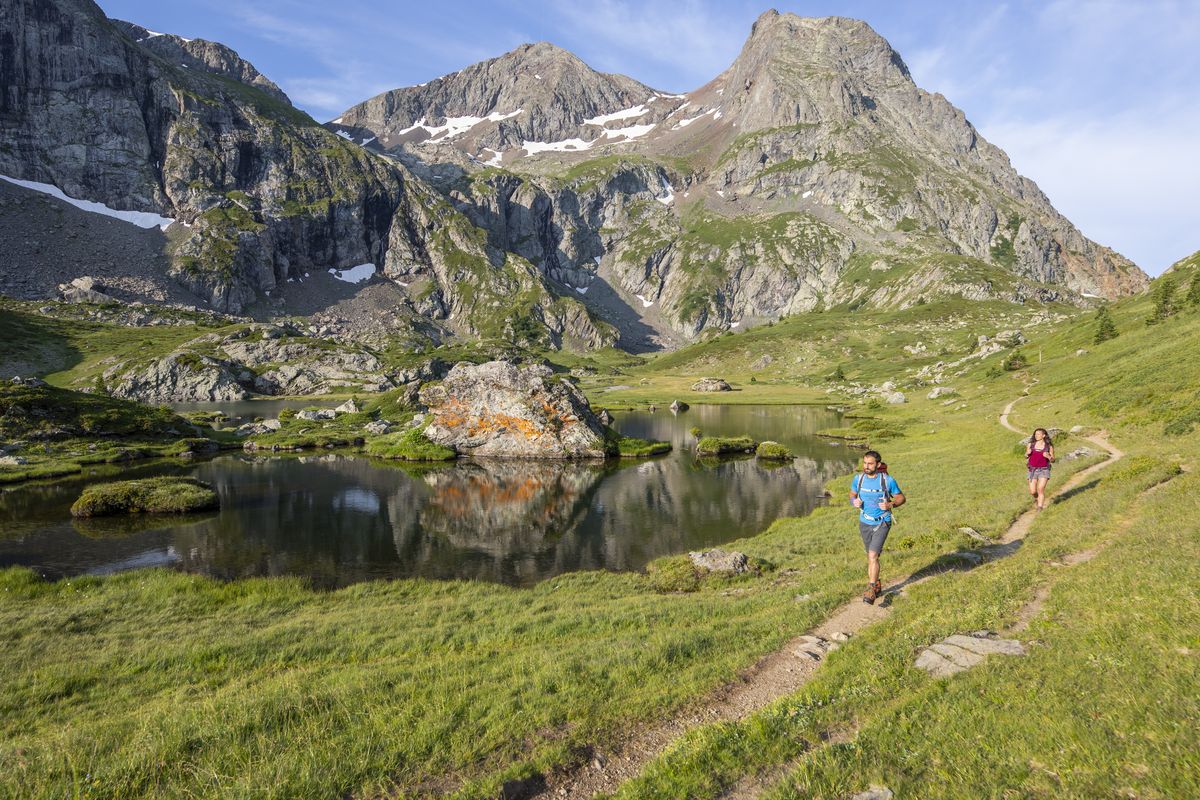
6. From Taillefer Plateau to Alpe du Grand Serre
Description
- Take the path going down towards the Plateau des Lacs (south). At altitude 2,003 m, return to the path coming from Basse Montagne. Turn south-west and walk alongside the Vache, Agneau and Noir lakes. There is a fairly steep climb to a small pass, then you turn downwards above Lake Fourchu.
- The rocky path descends to the village of Le Poursollet. It runs along the northern part of the lake then alternates between a good path and a small track via Lakes Punay and Claret.
- To cross Combe Oursière, the route briefly follows the road, which you leave to head for "Alpe du Grand Serre" just after the monument. The track turns into a pathway. At altitude 1,750 m, "Les Cheneviers", head for "Ruisseau des Fontenettes". Then continue towards "Cabane du Louvet", where the path becomes a narrow and steep track.
- At the open cabin in Le Louvet, turn right in front of the pond. Cross the via ferrata at the waterfall then go down into the forest (sometimes steep) before reaching the waterfall and Alpe du Grand Serre.
- Departure : Taillefer shelter
- Arrival : Alpe du Grand Serre
- Towns crossed : Oulles, Ornon, Livet-et-Gavet, and La Morte
5 points of interest
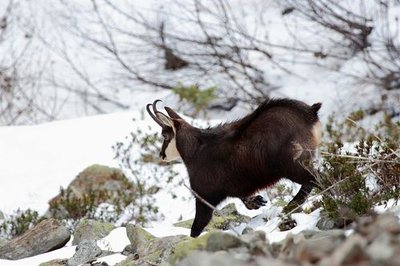
Chamois mâle en hiver - Christophe Albert - PNE  Fauna
FaunaChamois and rock ptarmigan
While hundreds of sheep graze on the edges of the plateau, higher up, on the nearby crests and summits, chamois and rock ptarmigan may be seen. These animals are the emblems of high altitudes, with the first nicknamed the “goat of the rocks", and the rock ptarmigan sometimes known as the “snow partridge". If you want to get a good look at either of them, you must leave them undisturbed: binoculars or a telescope are essential.
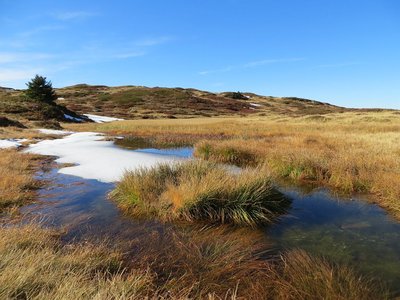
Tourbières du plateau du Taillefer - © Parc national des Ecrins - Justine Coulombier  Water
WaterThe Taillefer Plateau peat bogs
The extreme conditions of humidity, acidity and cold holding sway on the lake plateaux mean that organic matter is not fully broken down, so it builds up in hollows to form peat. Peat bogs are extremely useful. They are remarkable, rare, fragile and extremely precious habitats that are characterised by exceptional biodiversity. Here you can find rare species that are adapted to these difficult living conditions (high humidity, low temperatures, poor soils). The most common plant is peat moss (sphagnum) - real sponges that can stock up to 30 times their own weight in water! Peat bogs also play the role of a filter by purifying the air and water. They reduce erosion, help renew the phreatic zones, naturally store carbon and protect from flooding and drought. Under threat from human activity and climate change, this natural heritage is monitored closely.
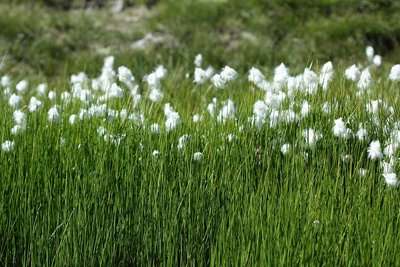
Linaigrette de Scheuchzer - © Parc national des Ecrins - Cédric Dentant  Flora
FloraCommon cottongrass
Nicknamed “bog cotton", common cottongrass grows in wet and acidic soils, such as the peat bogs of the Taillefer. Common cottongrass, like the rock ptarmigan or the mountain hare, are fragile species, the remnants of a glacial climate and still living in the mountain range. It is a cotton-like plant with white plumes, and fruit gathered into a single, quite thick ball. The smooth stalk is round, unlike the other species of cottongrass, which are triangular.
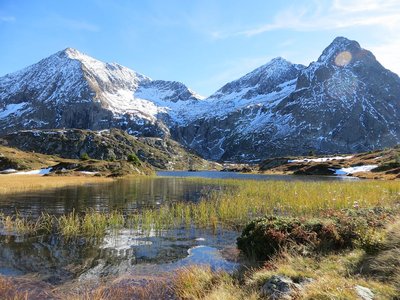
Le Lac Fourchu sur le Plateau du Taillefer - © Parc national des Ecrins - Justine Coulombier  Geology and geography
Geology and geographyThe Taillefer Plateau - Natura 2000 site
Recognised by the European Union for its great ecological interest, the Taillefer Plateau is listed in the Natura 2000 network. The network is made up of a series of European natural sites that are identified for the rarity or fragility of the wild, animal or plant species, and their habitats.
12,000 years ago, the withdrawal of the glacier from the Taillefer mountains shaped the landscape that can be seen today: a high plateau between 2,000 and 2,500 metres high, with a constellation of lakes mainly produced by old glacier abrasion; a plateau that presses down to the south on the abrupt and bare slopes of the summit of the Taillefer.
On the plateaux today there are over a thousand wetland and peat bog areas, a remarkable concentration, and one that is rare in the French Alps.
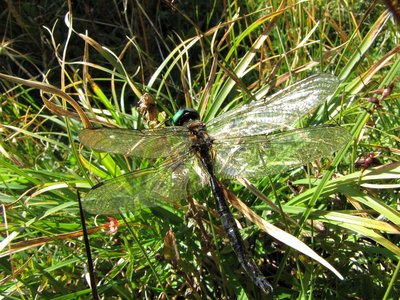
Somatochlora arctica - © Parc national des Ecrins - Christophe Albert  Fauna
FaunaThe northern emerald
The northern emerald is a dark-coloured dragonfly with a metallic green or shiny black body, contrasting with its lighter-coloured eyes. It is hard to tell it apart from other species in the genus. In the Ecrins, the species can only be found in the peat bogs of the Taillefer Plateau at an altitude of over 2000m, where it lives with its close cousin, Somatochlora alpestris.
Altimetric profile
Source

Report a problem or an error
If you have found an error on this page or if you have noticed any problems during your hike, please report them to us here:
